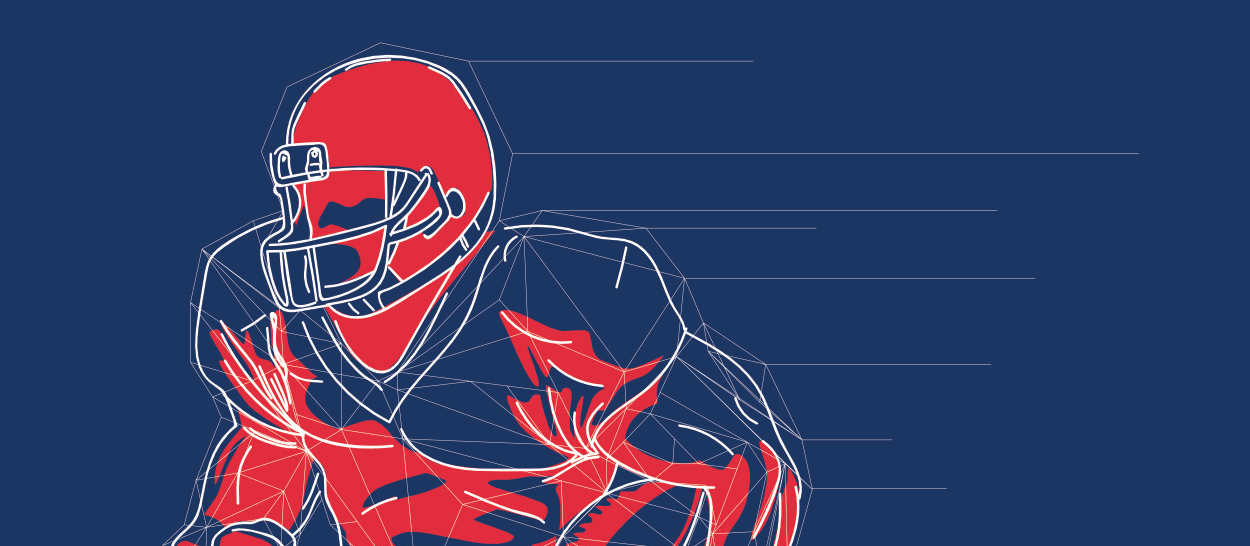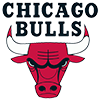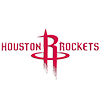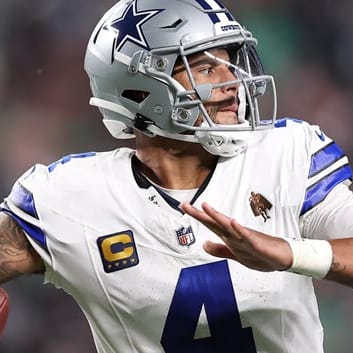But to win, one must understand the quirks of NFFC. Attacking an NFFC league similarly to a standard league will only lead to misery.
NFFC drafts also set the pace for the industry. Even if you don't participate in one, chances are your league's draft will be impacted by early NFFC drafts, which have already begun (yes, drafts are year-round now).
The Setup
The most popular offerings include the RotoWire Online Championship, a 12-team format that awards $1,500 each to 200 league winners and $100,000 to the overall winner; the Classic, a live-draft 14-team format with $7,000 each to 18 league winners and $80,000 to the overall winner; and the Primetime, a live-draft 12-team format in which 45 league champions win $6,500 each and the overall winner gets $150,000.
All three contests are head-to-head, points-style formats. Scoring includes a point per reception, which boosts the value of wide receivers and pass-catching running backs. Additionally, quarterbacks receive six points for passing touchdowns. League winners are determined at the end of Week 13 with the race for the overall championship running Weeks 14-16.
Contestants rank and submit their preferred draft positions, and then the order in which the preferences are assigned is randomly selected, a process known as Kentucky Derby Style (KDS) slotting.
What truly
But to win, one must understand the quirks of NFFC. Attacking an NFFC league similarly to a standard league will only lead to misery.
NFFC drafts also set the pace for the industry. Even if you don't participate in one, chances are your league's draft will be impacted by early NFFC drafts, which have already begun (yes, drafts are year-round now).
The Setup
The most popular offerings include the RotoWire Online Championship, a 12-team format that awards $1,500 each to 200 league winners and $100,000 to the overall winner; the Classic, a live-draft 14-team format with $7,000 each to 18 league winners and $80,000 to the overall winner; and the Primetime, a live-draft 12-team format in which 45 league champions win $6,500 each and the overall winner gets $150,000.
All three contests are head-to-head, points-style formats. Scoring includes a point per reception, which boosts the value of wide receivers and pass-catching running backs. Additionally, quarterbacks receive six points for passing touchdowns. League winners are determined at the end of Week 13 with the race for the overall championship running Weeks 14-16.
Contestants rank and submit their preferred draft positions, and then the order in which the preferences are assigned is randomly selected, a process known as Kentucky Derby Style (KDS) slotting.
What truly makes the NFFC unique is Third Round Reversal, a twist whereby the third round starts with team No. 12, providing the last drafter in the first round with three picks in the top 25 – picks 12, 13 and 25 (instead of 12, 13 and 36 in a traditional snake draft). This quirk started during the dominant days of LaDainian Tomlinson when the first overall pick provided a strong advantage.
With no clear No. 1 pick last season, many veteran drafters opted to set their KDS preference near the end of the draft order. This allowed the opportunity to snag three quality players in the top 25, with a basic blueprint of drafting two No. 1 wideouts in a format that strongly values them.
Receivers Rule the Roost
NFFC drafts have traditionally been more receiver-heavy than typical experts' drafts and standard leagues. But the trend of drafting wideouts earlier and more frequently became even more prominent the last couple seasons. What was once an NFL in which running backs were the cornerstones of offenses has now become a video-game passing league in which wide receivers are clearly the stable, proven fantasy commodities.
A higher percentage of NFL teams employed running back committees in 2015 than any year in NFL history. Last season, five running backs carried more than 250 times – Adrian Peterson, Doug Martin, Latavius Murray, Devonta Freeman and Frank Gore. Peterson was the lone back to exceed 300 carries. Even including injured backs Le'Veon Bell and Justin Forsett, who were on pace for 250 rushes, the number of workhorses last season was half of the 14 running backs that received 250-plus carries in 2012 (five with more than 300).
Per NFFC scoring, one running back – Freeman – averaged more than 20 fantasy points per game last season, making him the only RB to top 300 total points. There were three 300-point running backs in 2014.
Moreover, there was a sharp decline in running backs reaching the 1,000-yard rushing plateau. Seven backs surpassed it last season, following 13 in both 2014 and 2013 and 16 in 2012, the year Peterson topped 2,000 yards.
The decline in running back value is evident, and wise drafters no longer default to a running back as their first-round pick.
Not only so, but last season, wide receivers were considered for the first overall pick for the first time in recent memory. Antonio Brown, who led all non-quarterbacks with 353.5 NFFC points in 2014, was one of six players, and four wide receivers, who went first overall. Receivers Odell Beckham Jr., Dez Bryant and Julio Jones also were in the mix, joining running backs Adrian Peterson and Le'Veon Bell. Brown, incidentally, followed his tremendous 2014 fantasy-leading campaign with 359.3 points last season – tops among WR, RB and TE yet again.
The difference in last season's average point totals of the top-25 RB and WR is staggering and confirms the value of the best receivers. The average top-25 WR outscored the average top-25 RB by nearly 50 points, 241.2 to 193.3. In both 2014 and 2015, there were at least 21 receivers who surpassed 1,000 receiving yards and 12 who averaged more than 16 fantasy points per game, per NFFC scoring.
It was no surprise to see seven or eight receivers drafted in the first round of Primetime leagues last year, with half of the first four rounds filled by wide receivers (24 of 48). Receivers are clearly the belles of our late-summer ball.
Reviewing early 2016 NFFC ADP data, draft priority is clear as day. With the option to play a WR at the flex spot, savvy draft veterans will once again deploy a strategy of loading up on receivers early, opting to take their chances with a quarterback and tight end later.
Drafting five receivers among your first six picks is no longer reserved for the crazy person in the room – it is slowly becoming the norm.
Based on spring NFFC ADP data, seven wide receivers are typically being drafted in the first round, with 17 (of 24 picks) taken in the first two rounds. Brown, Jones and Beckham are the consensus top-3 overall picks, with Rams running back Todd Gurley occasionally mixed in. It is ever more clear that receivers have become the bread and butter of early draft strategies.
Running Back Roulette
Running back is the toughest position to decipher once again this season, partially because of usage and a heavier reliance on change-of-pace backs. Mostly, though, it's because of the punishment running backs endure and the ever-present injury risk.
Of the first 12 running backs drafted in NFFC leagues last year, only three – Peterson (RB2), Lamar Miller (RB5) and Matt Forte (RB12) – finished the season among the top 12 in running back points. Doug Martin was drafted just outside the top 12 last year but finished sixth at the position.
| PLAYER | ROUND | FINAL RB VALUE |
| Adrian Peterson | 1 | 2 |
| Le'Veon Bell | 1 | 47 |
| Eddie Lacy | 1 | 30 |
| Jamaal Charles | 1 | 49 |
| Justin Forsett | 2 | 39 |
| Marshawn Lynch | 2 | 56 |
| C.J. Anderson | 2 | 36 |
| Jeremy Hill | 2 | 24 |
| DeMarco Murray | 2 | 17 |
| Matt Forte | 2 | 12 |
| Lamar Miller | 3 | 5 |
| LeSean McCoy | 3 | 14 |
Early 2016 NFFC ADP data feature another 12 backs targeted in the first three rounds or so. A good portion of last year's early backs have been replaced with Gurley, David Johnson (borderline first-rounder), Doug Martin, Mark Ingram, Thomas Rawls and Cowboys rookie Ezekiel Elliott. Clearly, the position is as volatile as ever.
The Zero-RB strategy – ignoring the position early and then loading up on late-round RB – became popular the last couple years as a hedge against this volatility. The approach is essentially fishing for running backs with a net instead of a spear, hoping to find a gem or two among the many instead of gambling on a non-guarantee with a high-value pick. It can be quite fruitful, though it necessitates heavy waiver-wire activity.
A more balanced approach is to pair a workhorse running back and an elite receiver with the first two picks and then target the best available receivers in the next few rounds, all the while taking value with additional receivers, an RB2 and possibly a tight end or quarterback who fall to you in an ideal spot.
Each draft is its own chess match with multiple variables.
The Quarterback Shuffle
Only one of the five highest-drafted quarterbacks last season, Russell Wilson, finished among the top-5 QBs in NFFC points.
Aaron Rodgers was mediocre, finishing seventh. Andrew Luck, who was drafted neck and neck with Rodgers, was a bust altogether, struggling through subpar performances and playing just seven games. Third-ranked Peyton Manning had a disastrous regular season, getting picked 17 times in 10 games – the league's worst interception-per-game rate by a wide margin.
On the flipside, Cam Newton and Tom Brady proved draft-day bargains. Both available after the eighth round in most NFFC drafts, they ranked first and second among quarterbacks with 461.8 and 459.8 points, respectively.
Undrafted in most 12-team NFFC leagues last year, Carson Palmer finished in the top 5. In 14-team leagues, he was usually drafted as a QB2 around the 15th round. Several other late-round or undrafted quarterbacks contributed to fantasy teams, including Ryan Fitzpatrick (QB9), Kirk Cousins (QB11), Derek Carr (QB13) and Tyrod Taylor (QB17).
Waiting to draft quarterbacks has become routine throughout fantasy football, but it's important to note that, as last year again showed, using a high-value pick is not necessary even in NFFC leagues that award six points per passing touchdown.
First, the one-QB NFFC format starts two RB, three WR, one TE and one flex (RB/WR/TE), giving each starting roster seven position players for every quarterback. Thus, relative to other players, quarterbacks have less value than in leagues that start only five or six position players.
Second, the difference between the top quarterbacks and No. 12 is usually about 2-3 points per game, much less than the scoring differentials of running backs and wide receivers, who profit from receptions in addition to the standard yards and touchdowns.
Early NFFC draft results have Newton as the first quarterback off the board, usually taken around the end of the third round or early fourth. Rodgers and Luck once again are among the top three and likely will end up with mid-fourth-round summer ADPs.
Most quarterbacks will be available after the first five rounds, however. As such, waiting on a QB1 in the middle rounds after building a solid base of receivers and backs likely will be the most common strategy again this season.
Tight Ends, Defenses, Kickers
The approach with tight ends isn't much different from last year's – grab Rob Gronkowski in the first round or wait. Those who draft him in the first round accept the trade-off of a weaker RB2 or WR3 a few rounds later, but rarely is there a complaint as Gronk is arguably the league's most dominant receiver.
After Gronk, the consensus has Jordan Reed, Greg Olsen, Travis Kelce and Tyler Eifert rounding out the top five. Reed and Olsen were the second- and third-highest scoring tight ends last year, while Kelce and Eifert were sixth and seventh, respectively, with improvement expected this season.
Bargains, though, can be had late, which allows an owner to keep building his stable of running backs and wide receivers through the middle of the draft.
First-year Steeler Ladarius Green will be a big target for Ben Roethlisberger. Benjamin Watson hopes to build on his late-career breakout with the Ravens. Eric Ebron, Zach Ertz and Richard Rodgers could play even larger roles in their offenses. And Jimmy Graham should come cheap after struggling in his first season in Seattle and suffering a knee injury.
When targeting bargain tight ends, consider the significance of the player's role in his offense and his corresponding red-zone usage. Upside comes with touchdowns – the toughest stat to predict.
Defense/special teams is usually an afterthought, but it shouldn't be. Research which teams have improved in the offseason and which – perhaps the Panthers with the loss of Josh Norman – have declined.
Team defense is hard to project because scoring can come in bunches and is often boosted by unpredictable pick-sixes and return touchdowns. Turnovers, especially fumble recoveries, are often fluky. Focus on quarterback pressure – teams that generate heavy pressure usually have more sacks and turnovers.
For many years, it was the Seahawks first, then the rest. Only the Cardinals ranked among the top 6 in NFFC D/ST points the last three seasons. Teams that ranked top 5 twice in the last three years include the Seahawks, Panthers, Chiefs and Texans.
It's important to manage the end-game well, as most will wait as long as possible to draft a defense. Once the first defense is selected, though, the top units will come off the board quickly. Put yourself in position to lead the defense run. Also monitor the waiver wire during the season, as breakouts arise every year.
Kickers are typically undervalued, mocked and often even ignored. Not spending time researching them is done so at one's own peril. The kicker position is a starting roster spot, just like every other on a fantasy squad. The league's best and most consistent kicker the past few years is New England's Stephen Gostkowski, who averaged three more points per game than the average fantasy kicker last season.
Owners should not be reluctant to call out a kicker's name in the 17th round of these 20-round drafts instead of settling for leftovers. Target kickers attached to upper-echelon offenses, with field-goal percentages above 87, preferably in domes or warmer weather stadiums. Don't clog two roster spots on them, but streaming kickers week to week can also work. It's a lost art that can be mastered.
FAAB & Final Thoughts
Football is the most volatile and least predictable fantasy sport. Thousands of fantasy leagues are won each year because of late-round players who break out.
Even more so, leagues can be won on the waiver wire. Doug Baldwin was waiver-wire fodder last season before his huge breakout. David Johnson was dropped last September in dozens of NFFC leagues, only to be scooped up by eventual league winners. Dion Lewis, Charcandrick West, Thomas Rawls, Stefon Diggs, Tavon Austin, Travis Benjamin, Benjamin Watson – these are just a few of the free-agent pickups who were difference-makers last season. The previous year, it was Justin Forsett and C.J. Anderson.
There is no reason for NFFC owners to be stingy with their $1,000 free-agent budgets. We don't get to keep the leftovers at season's end.
Unlike baseball, in which FAAB dollars could be strategically saved for specific prospects promoted from Triple-A or the final month of roster expansion, football FAAB dollars should be more heavily disbursed on the front end.
A Week 2 backup running back replacing an out-for-the-year starter can go for 70 percent or more of your budget. He could be worth every penny and help win the league.
Of course, you can't throw your entire budget on the new flavor of the week each and every time. That's why it is critical to have a good feel for the talent, pedigree and scheme fit of each potential asset in the player pool. Knowing who could break out if given the opportunity can provide that much-needed edge to assist decision-making.
Finally, it's worth reviewing the NFL schedule for the NFFC championship round, Weeks 14-16. All things equal, it could be the determining factor between two closely ranked players.
The NFFC is the ultimate test of football knowledge, grit, patience and fantasy skill. It's a worthwhile contest with more than worthwhile prizes. I hope to see you there.
This article appears in the 2016 RotoWire Fantasy Football magazine. Order the magazine.






































